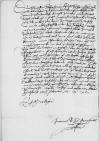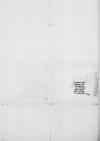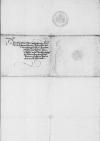List #5236
Ioannes DANTISCUS do Albrecht I von Hohenzollern-AnsbachHeilsberg (Lidzbark Warmiński), 1540-02-22
Rękopiśmienne podstawy źródłowe:
Pomocnicze podstawy źródłowe:
Publikacje:
| ||||||||
Tekst + aparat krytyczny + komentarzZwykły tekstTekst + komentarzTekst + aparat krytyczny
 GStA PK, HBA, C1 No 638 4 unnumbered
GStA PK, HBA, C1 No 638 4 unnumbered
Dem durchlauchten, hochgebornen fursten und herren, herren
 GStA PK, HBA, C1 No 638 1 unnumbered
GStA PK, HBA, C1 No 638 1 unnumbered
Durchlauchter(r), hochgeborner(r) furst, / hochgunstiger(r), vilgeliebter(r) her(r) und freundt. / Mein freuntlich un(n)d gancz vleiswillige dienste zuvoran(n). /
Gestriges tags hab ich E(wer) F(urstlichen) D(urchlauch)t cf.
Vor das freuntlich entpitten(n) / der durchlaucht(en), hochgeborn(en) E(wer) F(urstlichen) D(urchlauch)t
Dat(um)
E(wer) F(urstlichen) D(urchlauch)t williger(r)



